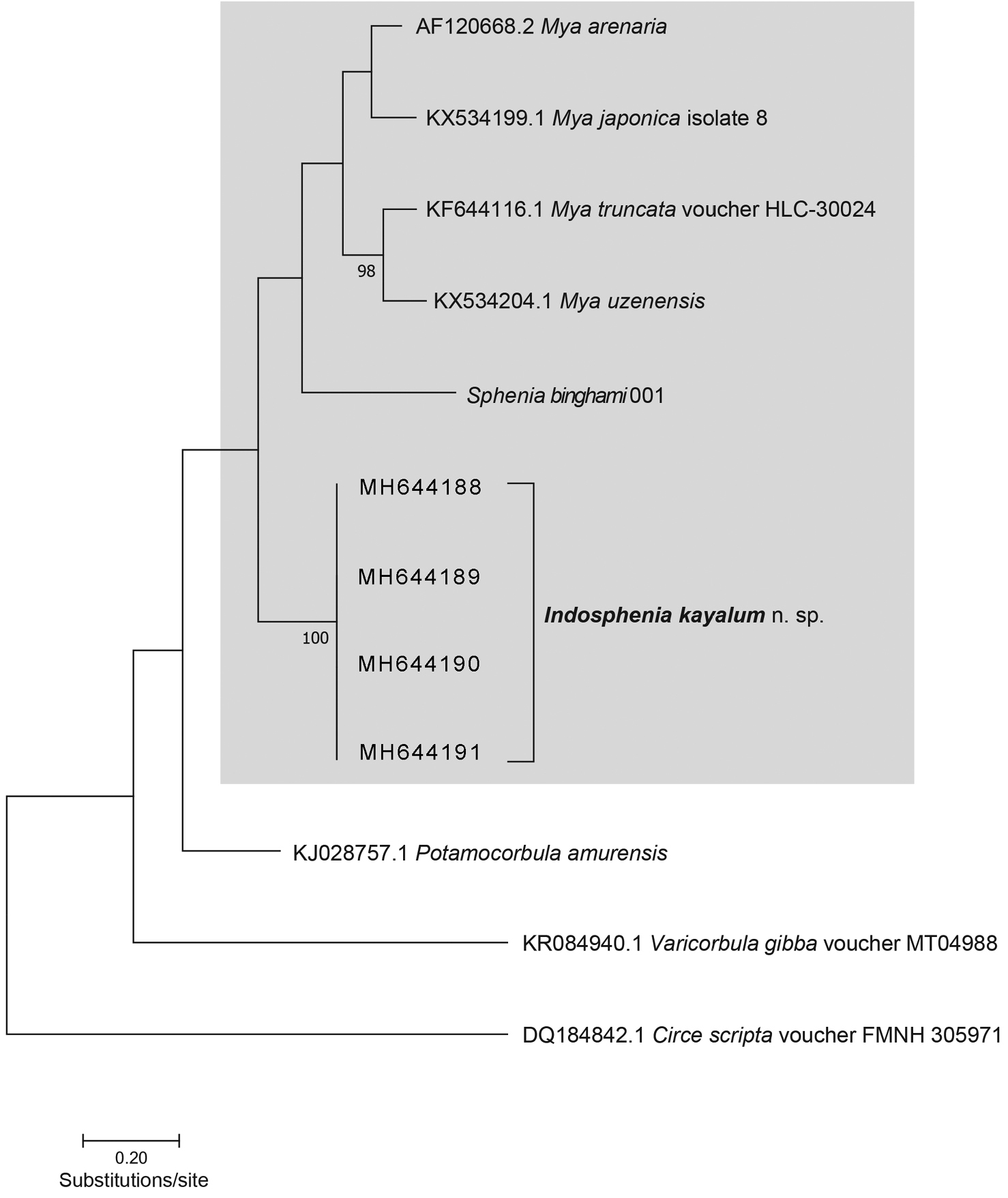
|
||
|
Phylogram showing Maximum Likelihood method based on the Hasegawa-Kishino-Yano model. The tree with the highest log likelihood (- 2576.44) is shown. The percentage of trees in which the associated taxa clustered together is shown next to the branches where such values exceed 95%. Initial tree(s) for the heuristic search were obtained automatically by applying Neighbor-Join and BioNJ algorithms to a matrix of pairwise distances estimated using the Maximum Composite Likelihood (MCL) approach, and then selecting the topology with superior log likelihood value. Grey area indicates Myidae. |